Scottish economic insights: November 2023
Further analysis and insights on the economic themes presented in the monthly Scottish economic bulletin report.
Labour Market Resilience
Scotland's labour market has performed strongly at the headline level as the economy emerged from the pandemic and in the face of weakening demand over the past year. Following the end of the furlough scheme in October 2021, there was significant uncertainty around how businesses' staffing levels, recruitment activity and availability of labour would adjust to the removal of this government support.
A combination of the rebound in demand and labour and skills shortages resulted in labour market tightening, and unemployment has remained low over this period, while many businesses have faced recruitment challenges, staffing shortages and upward pressure on wages.
The latest headline labour market data for July to September 2023, indicates that unemployment was 3.9% in Q3 2023, down marginally from the second quarter however has picked-up from the record lows observed over the past year. Similarly, the employment rate has fallen over the past year to 74.3% (down from 75.3%) and inactivity has risen from 21.9% to 22.7%.[16]
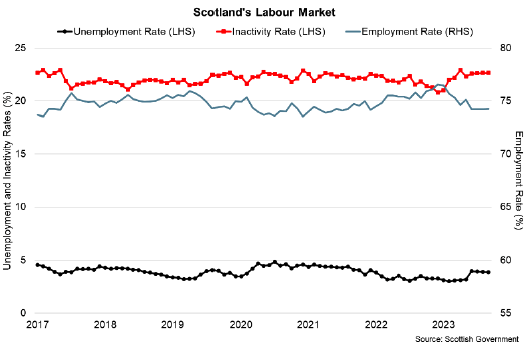
The latest headline data are ONS adjusted experimental estimates due to the increased uncertainty around the ONS Labour Force Survey (LFS) estimates. To monitor labour market conditions effectively and establish emerging risks, this reinforces the importance of using a range of data and survey material as indicators of the labour market.
Pay As You Earn Real Time Information data and Claimant Count data also indicate that the labour market has remained resilient. The number of payrolled employees in Scotland increased 2,000 over the month in October and is up 23,000 (0.9%) over the year, while the claimant count unemployment rate is 3.6% with the number of claimants of unemployment related benefits (108,700), down 2.6% over the past year. Furthermore, PMI data for October reported that businesses in Scotland continued to add to their head count for a ninth consecutive month and at the fastest rate in the UK.
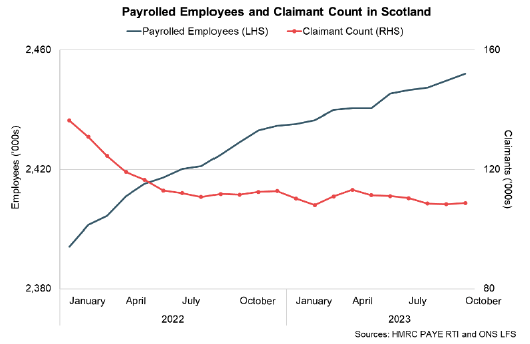
While there is clear resilience in the labour market, business surveys indicate that recruitment pressures are cooling as economic uncertainty is weighing on the supply and demand of labour. The RBS Jobs Report shows recruitment of permanent staff fell for a third consecutive month in October, with a further fall in vacancies and the availability of staff.[17]
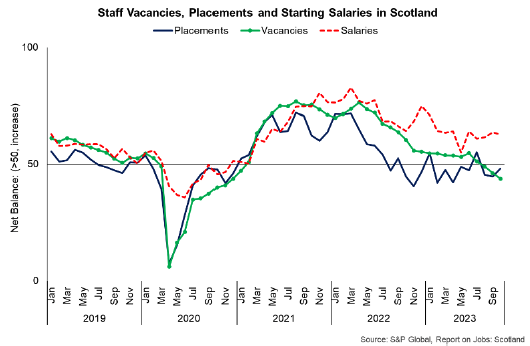
However there remains underlying tightness in the labour market. Data from the Business Insights and Conditions Survey indicate that in October, 25.4% of businesses experienced worker shortages; most common in the Construction (38.7%) and the Accommodation & Food (37.9%) sectors, while in September, 37.2% of businesses experienced difficulties recruiting employees, particularly in the Accommodation and Food (40.0%) and Information and Communication (36.6%) sectors.[18]
As such, while starting salaries growth has softened over the past year, it has remained robust. More broadly, nominal earnings growth has also remained elevated, though the pace of growth has moderated in recent months.
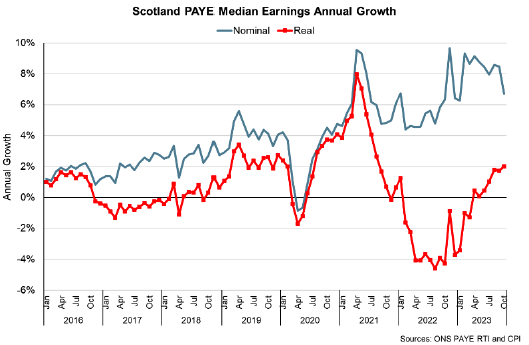
Over the year to October, median PAYE monthly earnings grew 6.7% in nominal terms having averaged 8.4% annual growth on average in 2023 up to that point. Adjusting for inflation (4.6% in October) median PAYE monthly earnings grew 2% over the year; its seventh consecutive month of annual real earnings growth and its highest rate since August 2021.[19]
Gender Pay Gap in Scotland and the UK
The Annual Survey of Hours and Earnings (ASHE) is the official source of UK earnings estimates and is used to look at the gender pay gap in Scotland and the UK.
The gender pay gap measures the difference between male and female median earnings (gross hourly earnings excluding overtime) expressed as a percentage of male earnings.
The gender pay gap for all employees has typically been reducing over time for both Scotland and the UK. In Scotland, the gender pay gap was 8.7% in 2023 (down from 11.8% in 2022) and was 14.3% for the UK (down from 14.4%). Furthermore, over the longer term since 1997, both the Scottish and the UK gender pay gaps for all employees has improved significantly (down from 26.5% and 27.5% respectively).

For full-time employees, in Scotland, the gender pay gap was 1.7% in 2023 (down from 3% in 2022) and was 7.7% in the UK (up slightly from 7.6%). This has also improved significantly over the longer term since 1997 when the pay gap was 18.4% in Scotland and 17.4% in the UK.
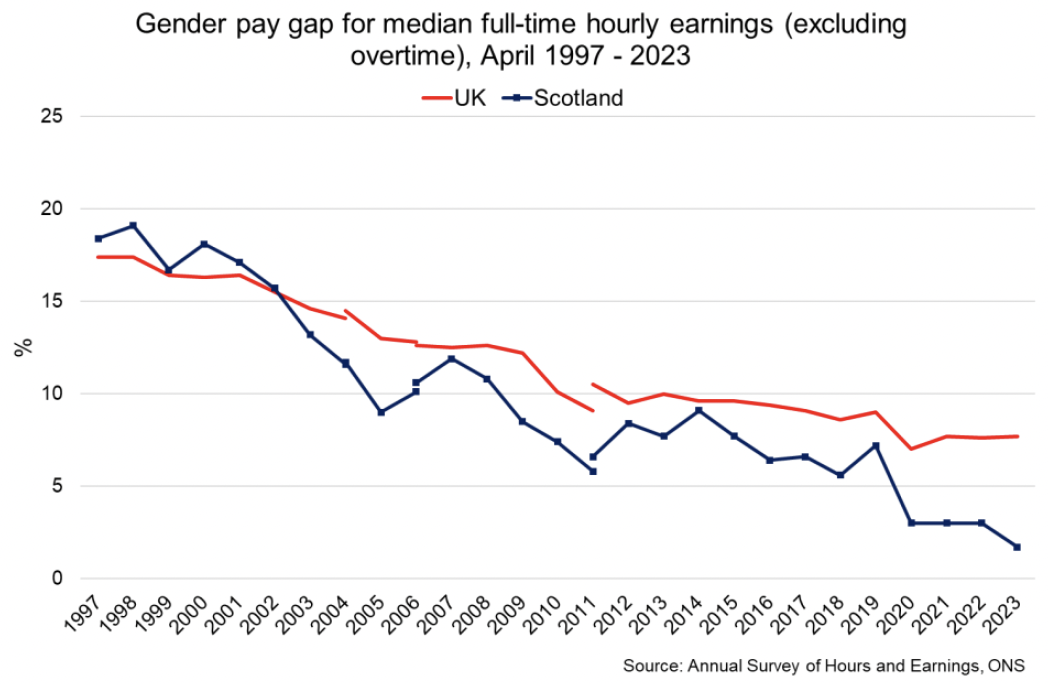
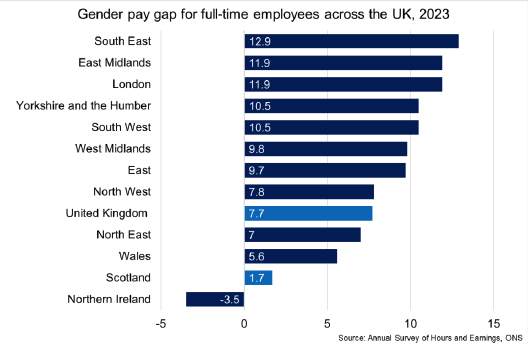
There is a large variation in the gender pay gap across regions, with Scotland having the second lowest gender pay gap for both full-time and all employees.

Average weekly earnings data provides insight into the difference between earnings growth in the public and private sectors at a GB level. Growth in private sector regular pay eased to 7.8% over the year to July-September (down from 8.1% in recent months) while public sector regular pay annual growth picked up to 7.3% (from 6.8%), with the recent gap in recent growth rates continuing to narrow.[20]

Looking ahead, the Bank of England's Agents' Summary of Business Conditions for Q3 2023 reported that pay settlements for 2023 continued to average 6 - 6.5%, though most respondents expected the level of settlements to reduce over the rest of this year and then reduce further next year.[21]
Contact
Email: OCEABusiness@gov.scot
There is a problem
Thanks for your feedback